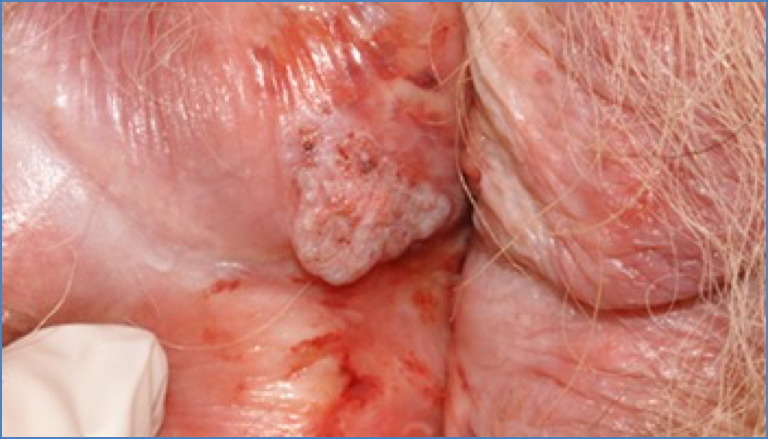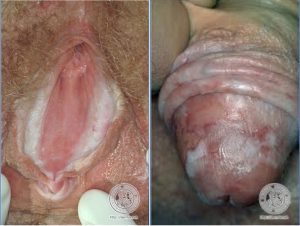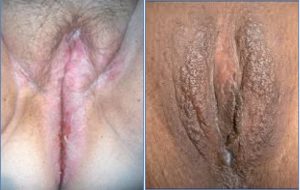Table of Contents
Overview – Vulval Cancer
Vulval cancer is a rare but important gynaecological malignancy, typically occurring in postmenopausal women. Most cases are squamous cell carcinomas and are commonly associated with high-risk human papillomavirus (HPV) infection, particularly HPV types 16 and 18. Other predisposing conditions such as lichen sclerosus also increase the risk. Early recognition and biopsy are critical for timely diagnosis and management.
Definition
Vulval cancer refers to malignant transformation of the external female genitalia, most commonly affecting the labia majora and typically manifesting as squamous cell carcinoma.
Aetiology
- High-risk HPV types: especially HPV-16 and HPV-18
- Chronic inflammatory or atrophic conditions: e.g. lichen sclerosus
- Increasing age (typically postmenopausal)
- Smoking
- Immunosuppression (e.g. HIV)
Pathogenesis
- HPV infection or chronic irritation → epithelial dysplasia → carcinoma in situ → invasive squamous cell carcinoma
- Lichen sclerosus can lead to chronic inflammation and epithelial atrophy → increased risk of malignant transformation
Morphology
Macroscopic
- Typically a unifocal lesion on the labia majora
- May present as a lump, ulcer, or raised white lesion
Microscopic
- Squamous cell carcinoma:
- Pleomorphic squamous cells
- Keratin pearls (hallmark of squamous differentiation)
- Variable degrees of dysplasia and mitotic activity

Clinical Features
- Demographic: Most common in postmenopausal women
- Symptoms:
- Localised vulval lesion (ulcer, lump, or plaque)
- Itching, irritation, or pain
- Bleeding or discharge
- Dyspareunia
- Lesions are often persistent and non-healing
Investigations
- Pelvic exam and vulval inspection
- Pap smear and colposcopy (to exclude concurrent cervical pathology)
- Definitive diagnosis: Biopsy of lesion
- Imaging (MRI, CT) for staging and lymph node involvement if invasive disease suspected
Management
- Surgical excision is the mainstay:
- Wide local excision for early lesions
- Radical vulvectomy and lymph node dissection in advanced or high-risk cases
- Adjuvant therapies:
- Radiotherapy ± chemotherapy depending on stage and spread
- Close follow-up to monitor recurrence and lymphatic spread
Prognosis
- Early-stage disease (Stage I–III): ~75% 5-year survival
- Advanced disease: Worse prognosis due to lymphatic spread
- Recurrence and metastasis typically involve pelvic or inguinal lymph nodes
Differential Diagnosis
Lichen Sclerosus
- Autoimmune disease → atrophic white plaques
- Morphology: Glistening white, thin skin with scarring
- Symptoms: Itching, pain, dyspareunia
- Treatment: Topical corticosteroids ± cryotherapy
- Increased risk of vulval SCC

Lichen Simplex Chronicus (Neurodermatitis)
- Cause: Chronic scratching or irritation
- Morphology: Thickened, leathery, hyperpigmented skin
- Symptoms: Chronic pruritus
- Treatment: Topical corticosteroids, treat underlying irritation

Summary – Vulval Cancer
Vulval cancer, most commonly squamous cell carcinoma, is a rare malignancy linked to HPV infection and chronic vulval dermatoses like lichen sclerosus. It typically affects postmenopausal women and presents with persistent vulval lesions, itching, or bleeding. Management is primarily surgical, often involving wide local excision or vulvectomy. For more on related conditions, visit our Reproductive Health Overview page.